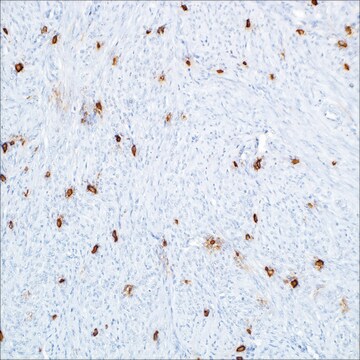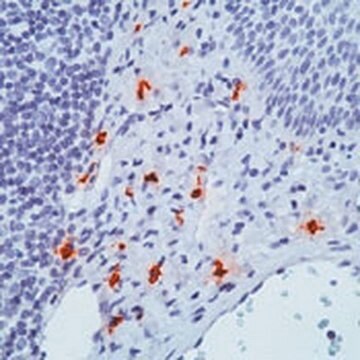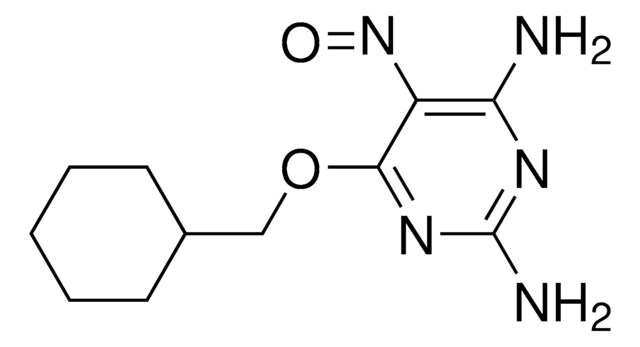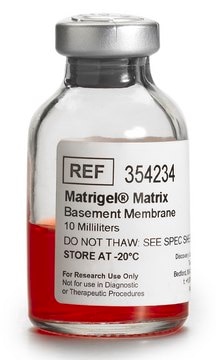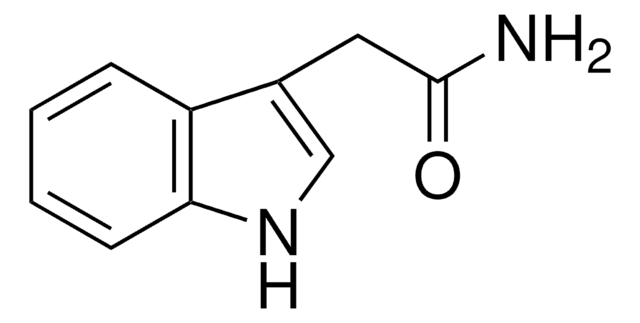MAB1222
Anti-Tryptase Antibody, Mast Cell, clone G3
clone G3, Chemicon®, from mouse
Sinónimos:
Mast cell tryptase antibody
Iniciar sesiónpara Ver la Fijación de precios por contrato y de la organización
About This Item
Código UNSPSC:
12352203
eCl@ss:
32160702
NACRES:
NA.41
Productos recomendados
origen biológico
mouse
Nivel de calidad
forma del anticuerpo
purified immunoglobulin
clon
G3, monoclonal
reactividad de especies
human
fabricante / nombre comercial
Chemicon®
técnicas
flow cytometry: suitable
immunohistochemistry: suitable
western blot: suitable
isotipo
IgG1κ
Nº de acceso NCBI
Nº de acceso UniProt
Condiciones de envío
wet ice
modificación del objetivo postraduccional
unmodified
Descripción general
Tryptase is the most abundant secretory granule-derived serine proteinase contained in mast cells. Tryptase has recently been used as a marker for mast cell activation and is involved with allergic response. Tryptase may act as a mitogen for fibroblast lines. Elevated levels of serum tryptase occur in both anaphylactic and anaphylactoid reactions, but a negative test does not exclude anaphylaxis.
Especificidad
Recognizes Mast cell tryptase. Will show reactivity to basophils but to a lesser degree.
Aplicación
Flow Cytometry Analysis: A previous lot of this antibody has been used on fixed cells in FACS using a conjugated secondary antibody. (Sperr, W., et al., 2001).
Optimal working dilutions must be determined by end user.
Optimal working dilutions must be determined by end user.
Research Category
Inflammation & Immunology
Inflammation & Immunology
Research Sub Category
Inflammation & Autoimmune Mechanisms
Inflammation & Autoimmune Mechanisms
This Anti-Tryptase Antibody, Mast Cell, clone G3 is validated for use in FC, IH, WB for the detection of Tryptase.
Calidad
Evaluated by western blot on human fetal skin lysate.
Western Blot Analysis: 0.5 µg/mL of this antibody detected tryptase in 10 µg of human fetal skin lysate.
Western Blot Analysis: 0.5 µg/mL of this antibody detected tryptase in 10 µg of human fetal skin lysate.
Descripción de destino
31 kDa
Forma física
Format: Purified
Protein G Purified
Purified mouse monoclonal IgG1κ in buffer containing 0.1 M Tris-Glycine (pH 7.4, 150 mM NaCl) with 0.05% sodium azide.
(see product datasheet for specific buffer formulation)
(see product datasheet for specific buffer formulation)
Almacenamiento y estabilidad
Maintain at 2–8°C for the duration listed on the product datasheet. (See product datasheet for storage conditions)
Nota de análisis
Control
Mast cells, basophils
Human fetal skin lysate
Mast cells, basophils
Human fetal skin lysate
Otras notas
Concentration: Please refer to the Certificate of Analysis for the lot-specific concentration.
Información legal
CHEMICON is a registered trademark of Merck KGaA, Darmstadt, Germany
Cláusula de descargo de responsabilidad
Unless otherwise stated in our catalog or other company documentation accompanying the product(s), our products are intended for research use only and are not to be used for any other purpose, which includes but is not limited to, unauthorized commercial uses, in vitro diagnostic uses, ex vivo or in vivo therapeutic uses or any type of consumption or application to humans or animals.
Código de clase de almacenamiento
12 - Non Combustible Liquids
Clase de riesgo para el agua (WGK)
WGK 1
Punto de inflamabilidad (°F)
Not applicable
Punto de inflamabilidad (°C)
Not applicable
Certificados de análisis (COA)
Busque Certificados de análisis (COA) introduciendo el número de lote del producto. Los números de lote se encuentran en la etiqueta del producto después de las palabras «Lot» o «Batch»
¿Ya tiene este producto?
Encuentre la documentación para los productos que ha comprado recientemente en la Biblioteca de documentos.
A human lung tumor microenvironment interactome identifies clinically relevant cell-type cross-talk.
Andrew J Gentles et al.
Genome biology, 21(1), 107-107 (2020-05-10)
Tumors comprise a complex microenvironment of interacting malignant and stromal cell types. Much of our understanding of the tumor microenvironment comes from in vitro studies isolating the interactions between malignant cells and a single stromal cell type, often along a
T Kinoshita et al.
Blood, 94(2), 496-508 (1999-07-09)
In the present study, we attempted to clarify the effects of interleukin-6 (IL-6) on the growth and properties of human mast cells using cultured mast cells selectively generated by stem cell factor (SCF) from CD34(+) cord blood cells. The addition
Regulation of matrix metalloproteinases in human endometrium.
L A Salamonsen, J Zhang, A Hampton, L Lathbury, L A Salamonsen, J Zhang, A Hampton, L Lathbury
Human Reproduction null
Christian Breuer et al.
World journal of gastroenterology, 16(34), 4363-4366 (2010-09-08)
Constipation and fecal impaction are frequent and distressing complaints in pediatric gastroenterology. Especially in neurologically handicapped children, treatment of severe forms of slow-transit constipation (STC) can be difficult. In the majority of cases, STC is of unknown etiology. However, in
Serum inhibitors for human mast cell growth: possible role of retinol.
S Ishida, T Kinoshita, N Sugawara, T Yamashita, K Koike
Allergy null
Nuestro equipo de científicos tiene experiencia en todas las áreas de investigación: Ciencias de la vida, Ciencia de los materiales, Síntesis química, Cromatografía, Analítica y muchas otras.
Póngase en contacto con el Servicio técnico